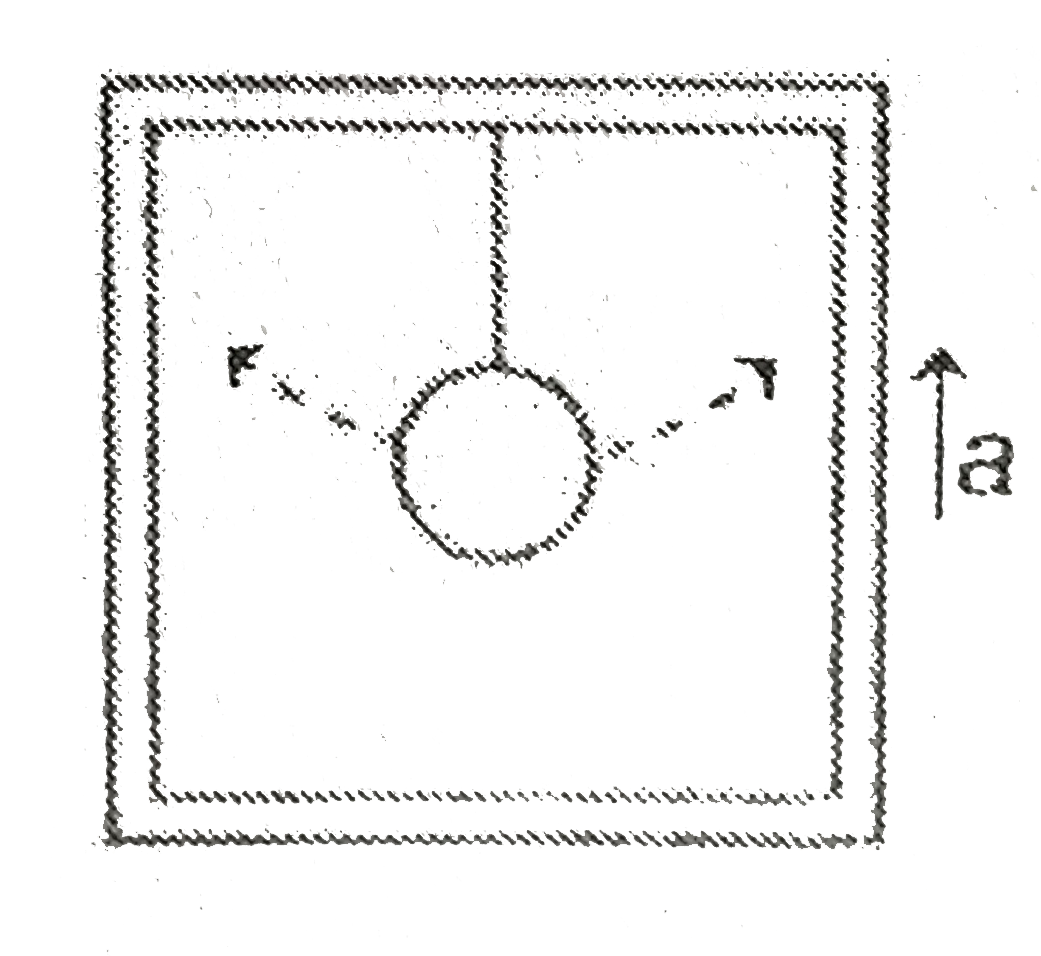A man measures time period of a pendulum (T) in stationary lift. If the lift moves upward with acceleration g4, then new time period will be
T4
4T
2√5T
√52T
The correct Answer is:C
To solve the problem of finding the new time period of a pendulum when the lift moves upward with an acceleration of g4, we can follow these steps:
1. Understand the Time Period of a Simple Pendulum:
The time period T of a simple pendulum in a gravitational field is given by the formula:
T=2π√Lg
where L is the length of the pendulum and g is the acceleration due to gravity.
2. Determine the Effective Gravity in the Moving Lift:
When the lift is stationary, the effective gravitational acceleration is g. However, when the lift accelerates upward with an acceleration of g4, the effective gravitational acceleration geffective acting on the pendulum will change. The effective gravity can be calculated as:
geffective=g+a
where a is the upward acceleration of the lift. Here, a=g4, so:
geffective=g+g4=g+0.25g=5g4
3. Calculate the New Time Period:
Now that we have the new effective gravity, we can substitute it back into the time period formula:
T′=2π√Lgeffective=2π
⎷L5g4
This simplifies to:
T′=2π√4L5g=2√45⋅π√Lg=2√5⋅T
where T is the original time period when the lift is stationary.
4. Final Result:
Therefore, the new time period T′ when the lift is moving upward with an acceleration of g4 is:
T′=2√5T
The time period T of a simple pendulum in a gravitational field is given by the formula:
T=2π√Lg
where L is the length of the pendulum and g is the acceleration due to gravity.
When the lift is stationary, the effective gravitational acceleration is g. However, when the lift accelerates upward with an acceleration of g4, the effective gravitational acceleration geffective acting on the pendulum will change. The effective gravity can be calculated as:
geffective=g+a
where a is the upward acceleration of the lift. Here, a=g4, so:
geffective=g+g4=g+0.25g=5g4
Now that we have the new effective gravity, we can substitute it back into the time period formula:
T′=2π√Lgeffective=2π
⎷L5g4
This simplifies to:
T′=2π√4L5g=2√45⋅π√Lg=2√5⋅T
where T is the original time period when the lift is stationary.
Therefore, the new time period T′ when the lift is moving upward with an acceleration of g4 is:
T′=2√5T
Topper's Solved these Questions
- SIMPLE HARMONIC MOTION BOOK - RESONANCE ENGLISHCHAPTER - SIMPLE HARMONIC MOTION EXERCISE - Exercise- 2, PART - I
26 Videos
- SIMPLE HARMONIC MOTION BOOK - RESONANCE ENGLISHCHAPTER - SIMPLE HARMONIC MOTION EXERCISE - Exercise- 2, PART - II
1 Videos
- SIMPLE HARMONIC MOTION BOOK - RESONANCE ENGLISHCHAPTER - SIMPLE HARMONIC MOTION EXERCISE - Exercise- 1, PART - I
25 Videos
- SEMICONDUCTORSBOOK - RESONANCE ENGLISHCHAPTER - SEMICONDUCTORSEXERCISE - Exercise 3
88 Videos
- TEST PAPERSBOOK - RESONANCE ENGLISHCHAPTER - TEST PAPERSEXERCISE - PHYSICS
784 Videos
Similar Questions
Knowledge Check
The time period of a pendulum clock is :
A1sB2sC1 minD12 h
The time period of simple pendulum inside a stationary lift is T. If lift starts accelerating upwards with the acceleration of g/2, then the new time period of the simple pendulum will be
View SolutionTime period of a spring pendulum when lift moves downward with constant velocity v is T second. When the lift moves upward with constant acceleration=g3 , the time period will be

View SolutionA man measures the period of a simple pendulum inside a stationary lift and finds it to be T sec. if the lift accelerates upwards with an acceleration g/4, then the period of the pendulum will be
View SolutionThe time period of a simple pendulum measured inside a stationary lift is found to be T . If the lift starts accelerating upwards with an acceleration g/3, the time period is
View SolutionA man measures the period of a simple pendulum inside a stationary lift and finds it to be T sec. if the lift accelerates upwards with an acceleration g/6, then the period of the pendulum will be
View SolutionTime period of a simple pendulum in a freely falling lift will be
View SolutionA spring balance is attached to the ceiling of a lift. A man hangs his bag on the spring and the spring reads 49N, when the lift is stationary. If the lift moves downward with an acceleration of 5m/22, the reading of the spring balance will be
View Solution

